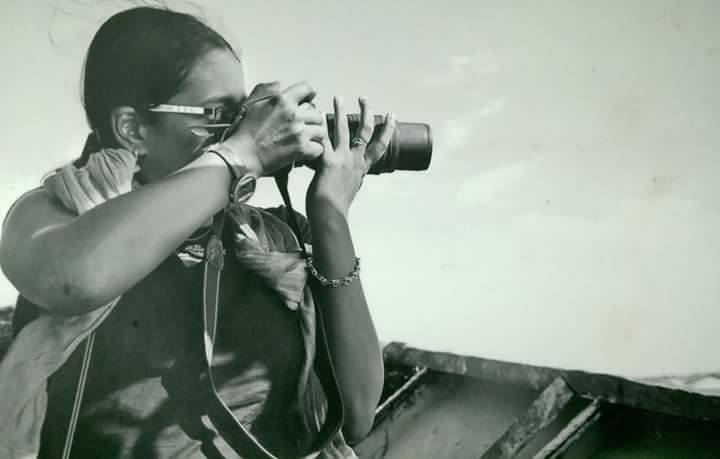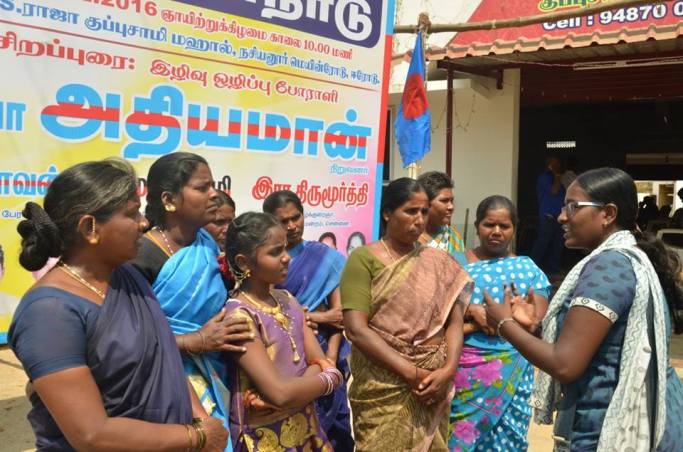Kakkoos, a compelling documentary film on manual scavenging in Tamil Nadu is all about showing the practice as it is without any filter. The pictures are shocking and watching them is easier said than done -- toilets teeming with shit, sanitary napkins lying scattered, people collecting faeces with their uncovered hands, cleaning hazardous medical waste, handling maggot-ridden corpses and much more. Kakkoos, which means toilet in Tamil, is set to be an exposé of manual scavenging, a practice forbidden through a legislation since 2013 in India.
Manual scavenging is really about caste discrimination
The film, shot over a year across 25 cities and towns of Tamil Nadu, showcases the individual perspectives of the workers, predominantly the Dalits engaged in manual scavenging. At a recent screening in Delhi, the audience was at a loss for words seeing footages of entrenched caste discrimination and indifference of policymakers and society at large. Interacting with the audience at the screening, Divya Bharathi, the 25-year-old filmmaker narrated how the death of two manual scavengers in a septic tank in late 2015 prompted her to make a film on the subject.

Born in Arapukottai near Madurai, Bharathi joined the left movement at a young age and went on to graduate from the Madurai Law College. Though she got to watch alternative cinema at a young age, it is the street protests following the death of the two sanitary workers after inhaling poisonous gas from a septic tank that Bharathi decided to film it. She got into political documentary filmmaking, her role model being Argentinian director Fernando Solanas. The apathy of the Indian left towards addressing caste issues disappointed her. The film also takes a dig at the Dalit organisations for taking advantage of a manual scavenger's plight, even partaking a ‘commission’ from the workers' families for getting them monetary compensation in case the workers die on the job. The practice of manual scavenging continues illegally as the definition of ‘manual scavenger’ in the Prohibition of Employment as Manual Scavengers and their Rehabilitation Act 2013, is inadequate. For example, sanitation work with gloves is not considered unlawful.
Debunking the lies of Swacch Bharat
In a harrowing scene in the film, a man is seen distraught about having to do this work. “I’m also a human being,” he cries, “think about me as well”. He goes on to remove faeces from the corner of a washroom with his hands and dispose it without any protective gears or cleaning equipment.
The film, through its harrowing footage, depicts the government failure aptly. More so in the backdrop of the ambitious Swachh Bharat Mission costing about Rs 2,00,000 crores. Why can’t a cleaning programme of this scale take up the issue of manual scavenging and deal with it wholly once and for all? Why machinery can’t be deployed instead of manual scavengers. Why has the budget for the eradication of manual scavenging come down from Rs 570 crores to Rs 10 crores? The film reasons that as long as the Dalits are seen as cheap labour meant to do such work by the other castes, they will never get respite from this. The scenes from Swachh Bharat Mission campaign juxtaposed to the ground reality of manual scavenging are a high point of the film.
There could not be a more potent image of the caste system at play than in the practice of manual scavenging the film depicts. Arunthathiyar, Kattu Naicker, Chakiliyar, Irular, Kuravar and many other Dalit subcastes are compelled to join the practice as options for working elsewhere are limited. Bharathi, while offering her introductory remarks at the screening, says she hopes that the 120-minute film on the brutal reality of manual scavenging and the inherent caste injustice stir up anger and not pity to bring in radical change. She says she named the film Kakkoos after she met a manual scavenger’s child who told the filmmaker that her name was Kakkoos because people around her called so. The small child had actually internalised this prejudice.
A ‘360 degrees’ look at the practice

Speaking on the banned practice, the national convener of the Safai Karmachari Andolan who recently won Ramon Magsaysay Award, Bezwada Wilson in an interview in the film says, “The government take steps to deal with the banned practice and improve the lives of lakhs of manual scavengers in our country but never goes to the extent of abolishing it fully. NGOs speak about nuclear hazards but are mum on manual scavenging. In that, lay the conspiracy of silence of the civil society.” The film is dedicated to those who indulge in this conspiracy of silence and let the dehumanising and dangerous practice continue, says the filmmaker. “Avangalukku kutra unarchi varanum (People should feel guilty),” she says.
A large chunk of manual scavenging work is done by women. The film takes on a feminist lens and depicts the inherent sexism and the assaults the women face on a daily basis. These women are made to work night shifts. They are often sexually exploited by their supervisors, sanitary inspectors, conservancy officers and contractors. Yet they have no option but to work. The film also shows how ignoring the caste as well as the class angle weakens the fight against manual scavenging.
False official statistics rolled out by the government are available to refute the existence of the practice. Hazardous wastes are still being removed by humans and not machines. In other countries, layers of safety gear are worn by workers when they enter sewers. But that is not the case in India. Technology will come to the rescue only when non-Dalits have to do this, the filmmaker says. The practice has been privatised and the workers hired through private contractors. If the worker dies on the job their families don't get any compensation as there are no records to show their employment as most of them are either proxy workers or work under private contractors.
A number of screenings of the film were shut down in Tamil Nadu by the police on the grounds of “law and order problems”. With Swachh Bharat Mission providing no solutions to the issue of manual scavenging, it is up to the people to take action.
The film ends with a song; the excerpt is below:-
Are you there to poop
Tell us
Are we here to clean
come and clean
Are you there to poop
Tell us
Are we here to clean
come and clean
If an animal poops, no other animal cleans
Oh fool with six senses why did this not reach your brain
We die in shit pits. You have no guts to question
Are you there to rule
Tell us
Are we here to die
come and clean













